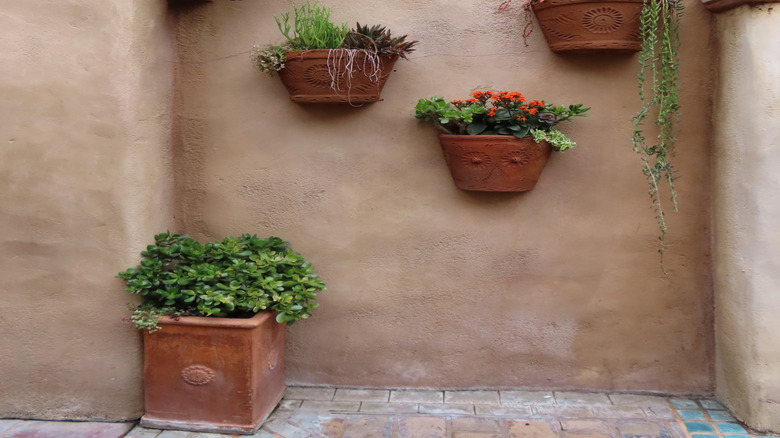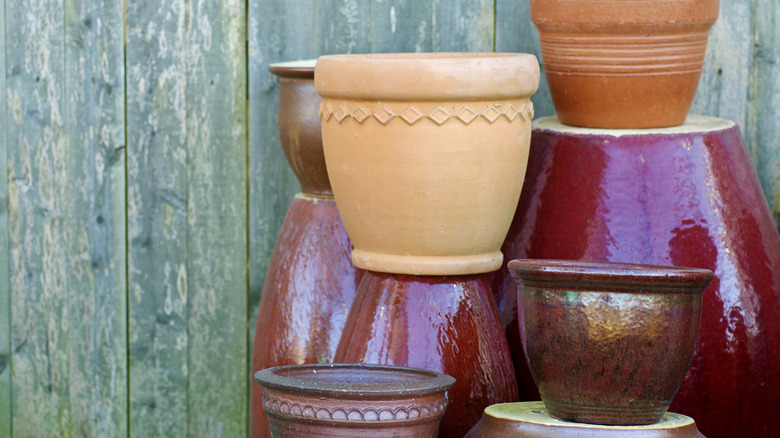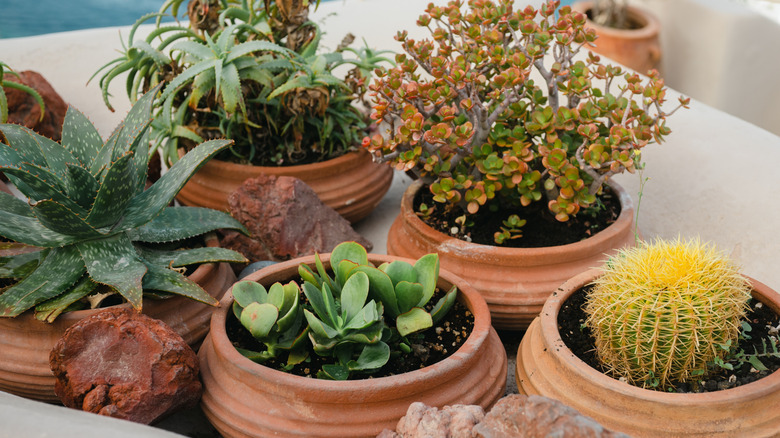The 2 Types Of Terra Cotta - And Why Choosing The Right One Matters
The warm color of terra cotta is so inviting and grounding that it's no wonder the fired clay material dating back to ancient times is still a mainstay in the modern home and garden. This baked clay makes up the versatile pots that are great for container gardening and, to add a pop of earthiness, many people are incorporating terra cotta tiles into their homes.
Various techniques for treating terra cotta have developed over the centuries and are still in use today. As you browse, you'll find two types: matte-finished unglazed terra cotta and its shinier glazed form, to which color may be added. Beyond aesthetics, the type of terra cotta you use matters because of its properties, such as its breathable nature and ability to retain water. We'll break down the benefits and drawbacks of each type, but keep in mind that both glazed and unglazed terra cotta can be fragile to work with or carry, and might crack in freezing temperatures. Some varieties (glazed or unglazed) are more resilient than others, so handle them with care!
Glazed terra cotta: hardy but heavy
In a container garden, a glaze on this earthy material can work in favor of container plants that need wetter soil, since it helps the pot retain moisture. Pots made from glazed terra cotta make lovely homes for tropical plants, including calatheas and philodendrons. Plus, you don't need to water them as often as you would in other pots since they aren't porous like unglazed pots. They offer many more color options than their unglazed cousins since the glaze can come a variety of hues, so if you wanted more of a varied aesthetic, glazed terra cotta may be the way to go.
One downside to glazed terra cotta though — especially if you move your garden pots often — is its heaviness. The glaze soaks into the porous material adding weight. This should also be kept in mind when planning decor projects. Attempting a DIY like applying broken tiles to the pot to create a mosaic effect would just make it heavier, so decorative techniques like using diluted white paint to antique the terracotta plant pots for a stylized upgrade make more sense if the pots are glazed.
Use unglazed terra cotta for cactus plants and patios
When terra cotta is left raw or unglazed, its porous quality is front and center. It is breathable and lets water evaporate, making it a perfect material for potted plants that can survive without much water. This includes cacti, orchids, and other plants that rely on a drying-out period between watering and succumb to rot when their roots get too wet. This same property makes it a good landscaping option for places you'll want water to be able to evaporate or drain, so consider using unglazed terra cotta tiles for your patio.
The other side of the coin with an unglazed form of terra cotta, however, is that it lets moisture escape after you water plants. It's not an appropriate container if your heart is set on growing a moisture-loving houseplant. There are many decor projects that don't hinge on the ability to keep water in or out, however, and rustic raw terra cotta is a natural choice for them. For example, you can transform simple terra cotta planters into a rustic yard fountain, watching water flow through your new creation and dry in the sun.


